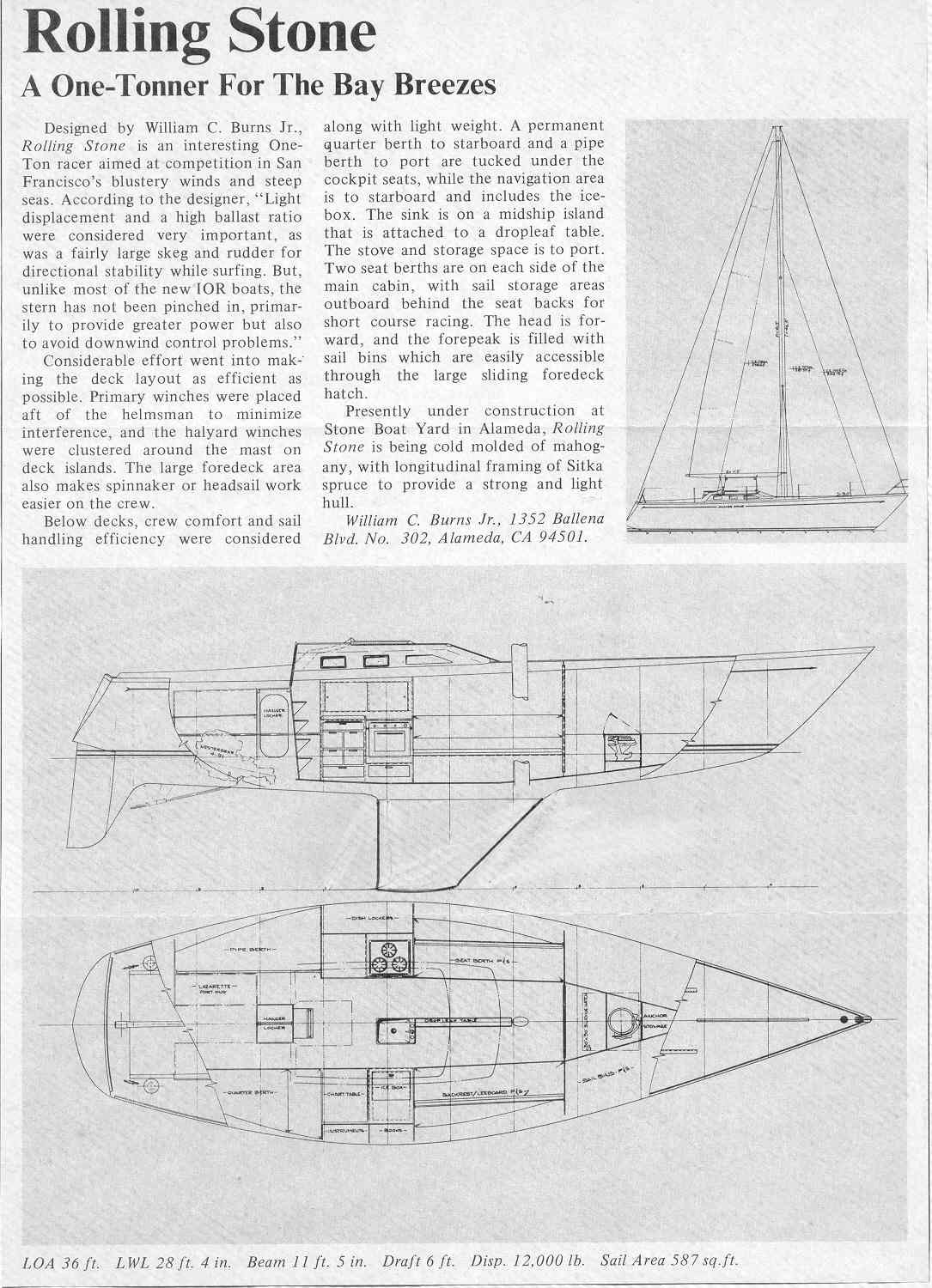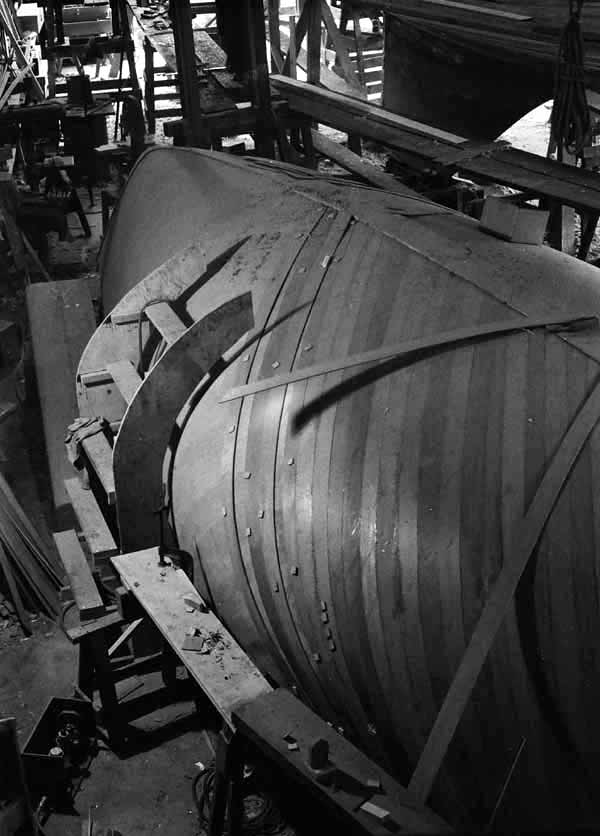A fast Burns RAcing Sloop
In 1973 Rolling Stone was designed as an IOR one tonner lightweight racer on the drawing board of naval architect William C. Burns Jr., better known as Chuck Burns. She was built at the Stone Boatyard, Alameda, California and launched in 1975. Fortunately we have some copies of the original alteration plans, which are shown in the Gallery. At that time Chucks office was located in Alameda and his customer was the owner of the nearby Stone Boatyard, John Whitsett. John wanted a fast racer „aimed for competition“ in the San Francisco bay area. Some of Chucks intentions and design ideas are presented in the article below. Burns was – and still is – well known for his fast and really beautiful boats, many of them winning prizes, for example the half-ton champion Petrified.
Not a typical IOR Racer
As described in the article below Rolling Stone features some differences compared to the typical IOR philosophy of this era. Most remarkable is the light displacement with a very high ballast ratio. Rolling Stone is a cold-moulded construction made of four layers of 3/16″ (4.7 mm) Honduras mahogany, diagonally planked over longitudinal stringers of Sitka spruce. This design leads to a very light but strong hull and after more than 40 years of excessive service it shows absolutely no signs of fatigue or loss of its original strength. Cold-moulded wood is still a very sophisticated but nowadays also a very expensive lightweight construction material, especially if you intend to use mahogany. The deck and housetop are made of fibreglass over mahogany plywood. The cockpit is self-bailing with bridge deck and tiller steering to semi-balanced spade rudder. Please visit the web pages of Peter Burrowes for a very personal and unique description of the building process of Rolling Stone and the Stone Boatyard.

Impressive Ballast Ratio
Besides the light hull Rolling Stone is fitted with an outside lead ballast of 6,700 lbs (appr. 3.0 t) giving the boat an impressive ballast ratio of more than 53 %, which leads to a stablitiy range of 142 degrees according to the UK Code of Practice. In the photo below Rolling Stone is still in the process of being planked at Stone Boatyard.

Downwind Performance
Typical problems of IOR designs are insufficient power and stability in terms of control while sailing downwind. Burns countered these well-known issues and designed skeg and rudder fairly large.
About Stone Boatyard
The Stone Boatyard was established in 1853 by William I. Stone from Dartsmouth, England in the Hunter’s Point area of San Francisco (see here for more details). It was one of the oldest and longest running businesses on the Pacific Coast. A very personal description of the yard, the boats and the people working there you’ll find here at the wondeful web pages of Peter Burrowes. A special part is dedicated to Rolling Stone. A general historical essay about the boatyard can be found in in the Online Archives of California (O.A.C.) under this external link.
